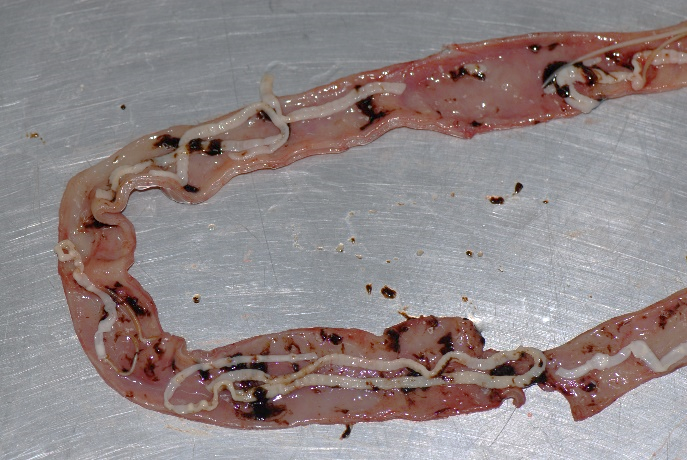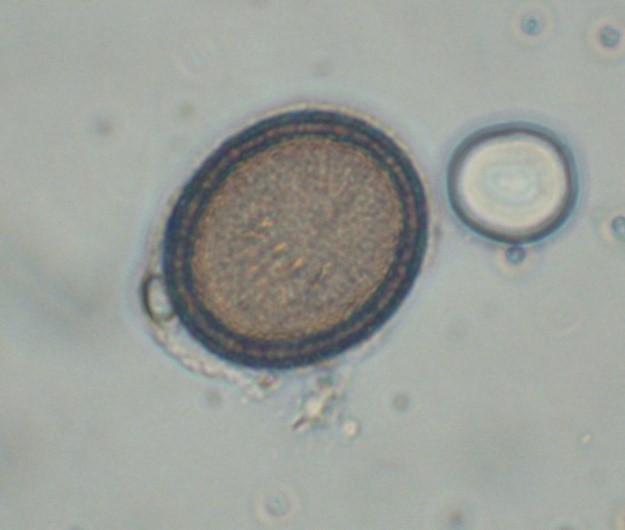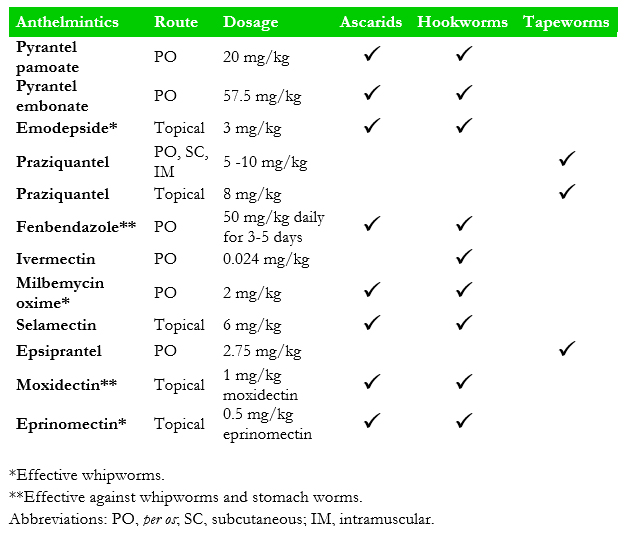Cat Tapeworm
(Taenia taeniaeformis)
Taenia taeniaeformis is a common tapeworm of cats. It is zoonotic, but of minor significance.
Distribution
Worldwide
Clinical signs
Taenia taeniaeformis infections in cats are very rarely of clinical significance with only a few reports of intestinal obstruction due to extremely heavy infections.

Figure 1. Taenia taeniaformis adult tapeworms in the small intestine of a cat (Image credit: Dr. A. D. Mihalca)

Figure 2. Taenia taeniaformis egg on faecal flotation bearing a hexacanth embryophore (Image credit: Dr. R. J. Traub)
Diagnosis
Taenia taeniaeformis infections in cats can be confirmed by the presence of distinctive whitish proglottids (segments) in the faeces bearing a single lateral genital pore (Fig. 1). As proglottids as opposed to eggs are shed in faeces, the absence of eggs on standard faecal flotation (SOP 1) does not rule out infection. Eggs are typical Taeniid eggs, spherical, 31-36 μm in diameter with a hexacanth embryophore (Fig. 2) [1].
Treatment
For anthelmintic treatment options refer to Table 1.
Table 1 Routes of administration, dosage and efficacies of commonly utilised anthelmintics against the primary gastrointestinal parasites of cats [1,2].
Prevention and Control
The control of T. taeniaeformis can be achieved by treating cats against tapeworms every 2-3 months, by preventing cats from hunting and eating rodents, and by controlling rodent populations.
Public health considerations
Adults of T. taeniaeformis have been recovered from the intestines of human patients and in a single case a strobilocercus (larval stage) was found in a serous cyst present in the liver of a human patient, who died from unrelated causes [1]. Nonetheless, this parasite is considered of minor zoonotic significance.
References
[1] Bowman DD, Hendrix CM, Lindsay DS, Barr SC. Feline Clinical Parasitology. Iowa State University Press, Ames, USA. 2002.
[2] Taton-Allen G, Cheney J. Gastrointestinal parasites. In: Lappin M (ed) Feline internal medicine secrets. Philadelphia, Hanley & Belfus, 2001; p. 85-95.

